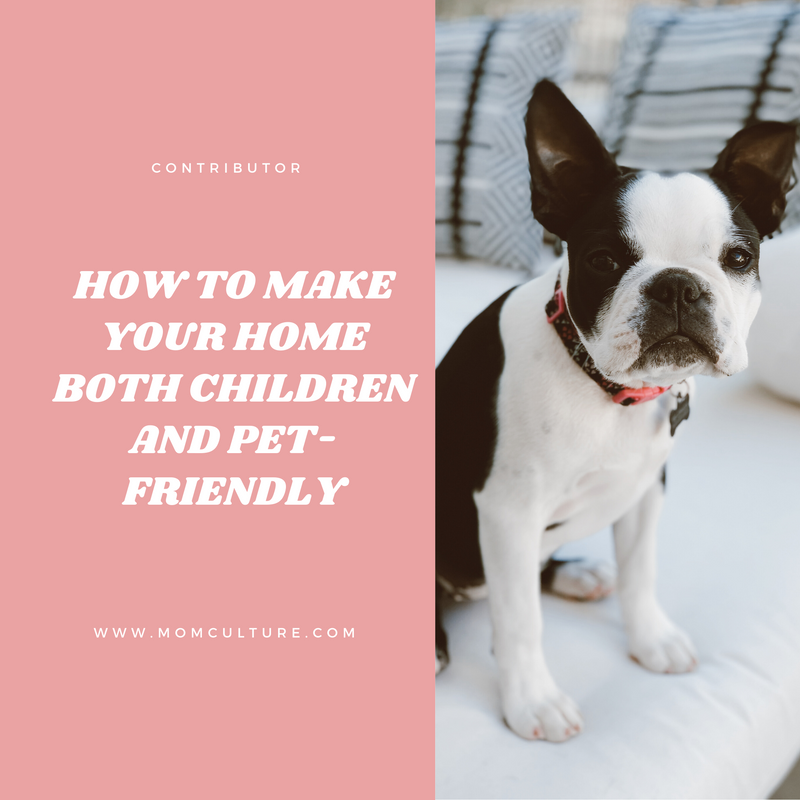
Pets are a great influence on young children and can help them develop in many ways. We have looked at a few ideas to make it simple for you to introduce animals around the house while keeping your children and your home safe.

Benefits of Keeping Pets
There are many advantages to having children who grow up with animals as a part of their life. Hospitals have also started allowing dogs onto wards to help calm children as this is a great way to alleviate any stress or fear that the little ones might have. One of the most important roles of having a pet is constant companionship and loyalty in and around the family home. Having an animal that needs attention is an excellent way to teach your children empathy as they understand when the pet needs food, to be walked or a cuddle if there is wind, rain or fireworks that can scare some animals. All domestic pets can give unconditional loyalty and help build responsibility in children as they get used to feeding, watering or walking the pet as part of a regular schedule.

Safe for Curious Animals
In many ways, animals are like young children and have the same curious streak, continually trying to find out what something is, or tastes like. Famous for their curiosity, cats perhaps best represent this characteristic in a home environment, where nothing is “too interesting” or off-limits. Although a cat's curiosity is a good characteristic, you should make sure that they won't harm themselves when finding out about objects around the home. If you enjoy having plenty of plants around the house you should be aware that some can have adverse effects on your feline. For this reason, you should consider investing in non-toxic plants that won't harm your cat if they do decide to eat or chew on them. Animal-friendly plants are not only safe for pets but also for children, so you don't need to worry about your child getting a rash or feeling sick no matter how much they too enjoy playing with the plants.

Household Safety
The process of keeping your house safe for pets is very similar to what you would do to keep your own children safe. Keep electrical cords secured so they can't be easily tugged on or pulled, many accidents happen by children or pets snagging on a cable, one that can very well be connected to a scalding hot kettle and can cause severe burns. Put knives away into drawers (instead of a block) so your family pet can't knock it or cut themselves on it. Place any small objects on high shelving so that they can't be swallowed or knocked over where other animals or children can get at it. Keep glass out of reach so it won't be broken, which can cause cuts or be ingested, leading to serious medical problems.
Set the Boundaries
Try to keep an area in the home where pets are not allowed, such as the upstairs bedrooms so that you only need to make certain areas safe for them. Use a stair gate as you would for children to keep your pets in areas you know are safe for them to live and play. Teach your pets what they can or can't do by saying "no" or punishing them when they display bad behavior and give them treats when they listen to your commands. Young pets will need constant reminding or rules as they are like young children and try to push the boundaries to understand what they can get away with. By spending a little time with them when they are young, your pets will quickly understand the house rules and should start to behave and stay in the areas you allow without fuss.

Easy Maintenance
Having children and pets in a home can lead to some unexpected mess. To avoid the need to be continually cleaning you should try to set up your home so it is easy to keep and maintain clean. Carpets can get dirty very quickly so opting for a hardwood floor or tiles can save you a lot of time. Use throw blankets on your sofas and chairs. These can be washed in a machine with little effort. Hang easy-to-clean wallpaper or use paint that can be cleaned with a damp cloth. Have an area outside where you can wash a dirty dog after a walk when it has been raining, and keep a few old towels which are easy to reach to clean off mucky paws before they enter the house. Try only to have easy to wash curtains and blinds as these can get dirty quickly. Use common sense when buying furniture to ensure you don't end up spending more time cleaning it than you do actually using it.
Having a family pet doesn't need to be hard, and they will be a great addition to any family. Follow our simple steps above to ensure you get the most out of having a pet in the home that will live harmoniously with your children. Consider your circumstances before choosing what type of animal to get, and your children will have a constant companion, and you will still have a happy and safe home for everyone to enjoy.



